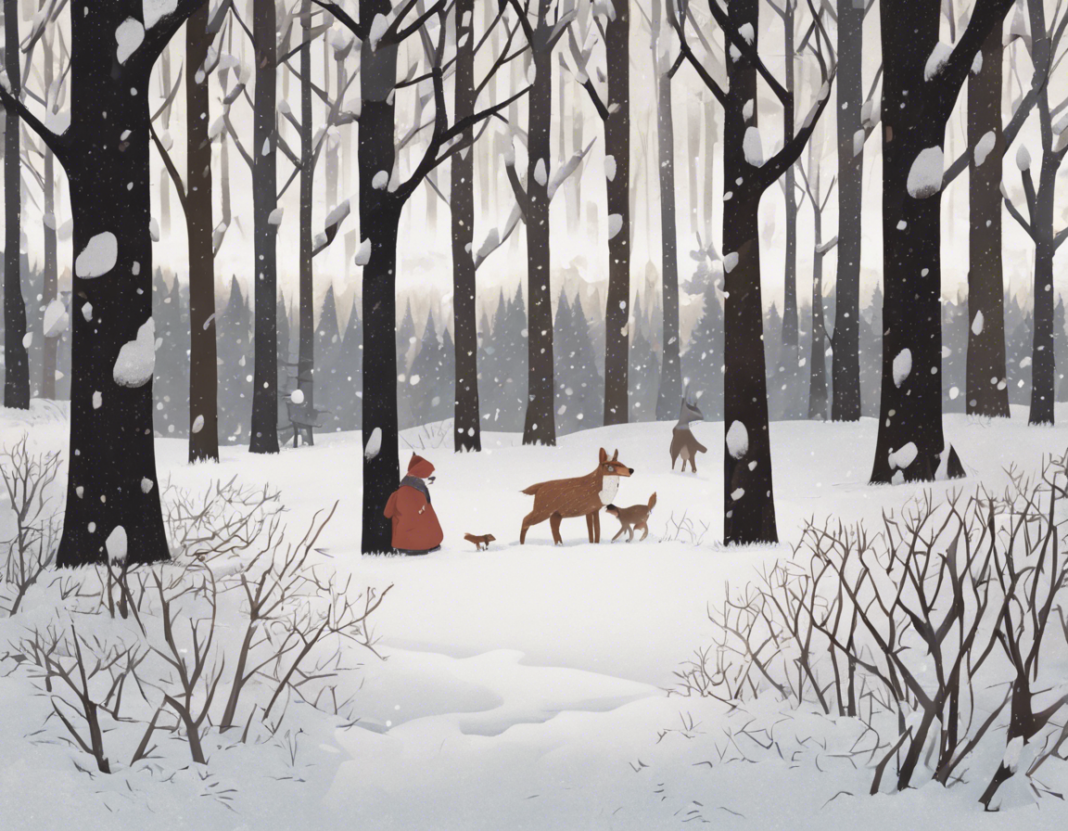Robert Frost’s “Stopping by Woods on a Snowy Evening” is a celebrated piece of literature that captivates readers with its simplicity and depth. As readers delve deeper into this poem, they often encounter various questions that spark curiosity and intrigue. Let’s unravel some of the mysteries behind this iconic work through a series of frequently asked questions.
1. What is the central theme of “Stopping by Woods on a Snowy Evening”?
The central theme of the poem revolves around the concepts of duty and temptation. The speaker is momentarily enticed by the tranquility and beauty of the snowy woods but ultimately feels obliged to continue on his journey due to his responsibilities and commitments.
2. Why does the speaker stop in the woods on a snowy evening?
The speaker stops in the woods to appreciate the serenity and beauty of nature. The quiet, peaceful setting contrasts with the hustle and bustle of everyday life, providing a moment of respite and reflection.
3. Who is the narrator of the poem?
The narrator is a traveller on horseback who stops by a remote woods on a snowy evening. While the narrator remains unnamed, their contemplative thoughts and observations invite readers to reflect on deeper philosophical themes.
4. What is the significance of the last two lines: “And miles to go before I sleep / And miles to go before I sleep”?
These final lines suggest a deep sense of obligation and duty. The repetition of “And miles to go before I sleep” emphasizes the speaker’s awareness of the long journey ahead before reaching their destination, both literally and metaphorically.
5. What is the role of nature in the poem?
Nature plays a crucial role in setting the scene and evoking a sense of tranquility and isolation. The snowy woods symbolize a space of contemplation and introspection, inviting readers to ponder life’s complexities.
6. Is there a deeper meaning to the poem beyond the literal interpretation?
While the poem’s surface meaning is straightforward, it also invites readers to explore deeper philosophical questions about life, death, duty, and the human experience. Frost’s use of imagery and symbolism encourages multiple interpretations and reflections.
7. How does the poem create a sense of atmosphere and mood?
Through vivid descriptions of the snowy evening, the silent woods, and the speaker’s contemplative state, Frost creates a profound sense of atmosphere and mood. The repetition and rhyme scheme add to the poem’s musicality, enhancing the overall tone.
8. What does the interaction with the horse symbolize in the poem?
The horse acts as a silent companion to the speaker, symbolizing loyalty, duty, and a grounding force amidst the speaker’s momentary distraction. The horse’s actions mirror the speaker’s own sense of responsibility and obligation.
9. How does the poem explore the themes of solitude and introspection?
“Stopping by Woods on a Snowy Evening” delves into themes of solitude and introspection through the speaker’s solitary moment in nature. The peaceful setting allows for quiet contemplation and self-reflection, highlighting the importance of stillness in a busy world.
10. What lessons can readers take away from “Stopping by Woods on a Snowy Evening”?
The poem encourages readers to appreciate the beauty of nature, reflect on the balance between responsibilities and personal fulfillment, and contemplate the deeper meanings of life and existence. It serves as a poignant reminder of the importance of taking moments of quiet contemplation amidst life’s chaos.

